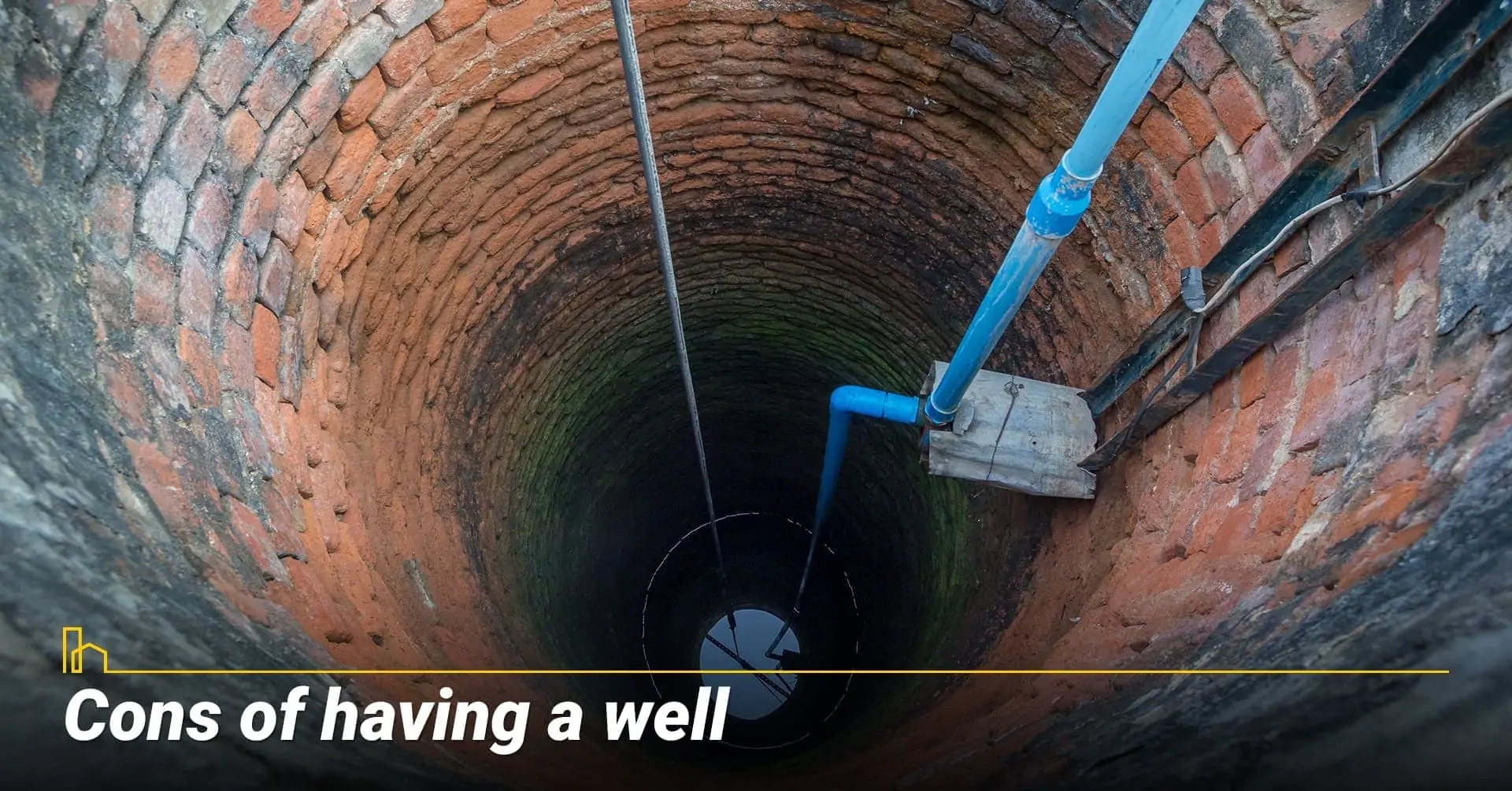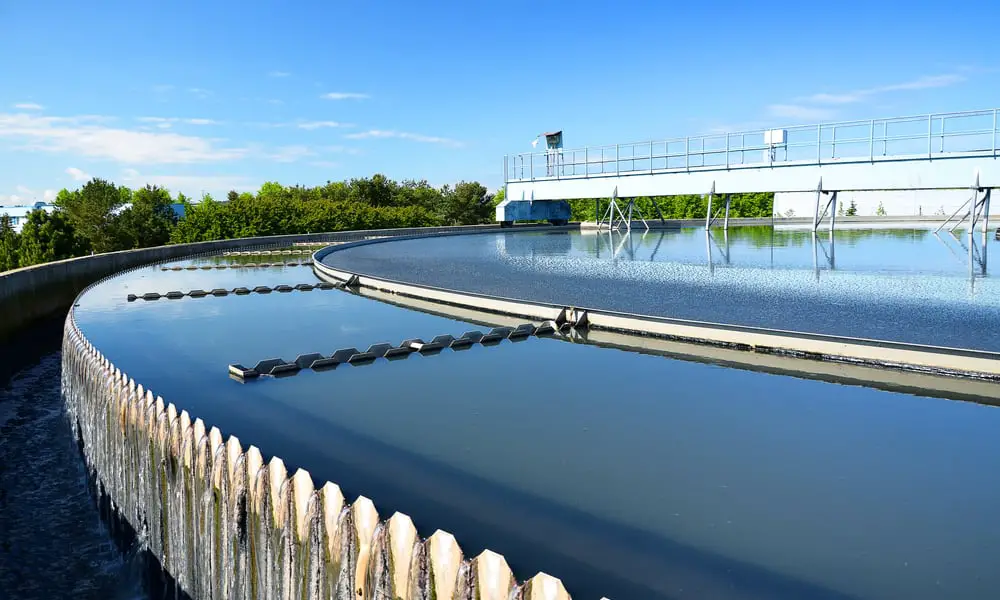There are benefits and qualities of having Well water on your property that cannot be found in City water, and on the other hand, there are advantages to having a City water hookup that some people feel gives an edge over depending solely on a Private Well for providing water which can lead to the question. Is Well Water Better than City Water?
Pro
Well H2O is not billed
H2O may taste better (more minerals)
Chemical additives aren’t used
City H2O hookups are expensive
Con
Wells need inspection & testing
Can run dry & use electric
City H2O takes responsibility for purity, quantity & delivery
Banks & Mortgage Co. see City H2O as a more stable option
If you’re a new homeowner and your property comes with a private well, you’ll need to read this article for insight into whether or not to negotiate with the sellers to add a City Water hookup or investigate the advantages and possibilities of buying a property with a healthy working Well.
Well Water vs City Water
Private Well Water Pros
- No monthly water bill, regardless of how much you use

- No chemical additives are used between the treatment facility and your home
- It may taste fresher and has nutritional benefits like minerals depending on where the well is located
- Outside climate factors like natural disasters do not influence the supply
Private Well Cons
- The initial cost of a good installment well-digging costs and inspection
- Water quality and testing are well owners’ responsibility
- Requires electricity for the pump to deliver H2O from the well to the homeowner
- It may contain natural minerals that stain the water and affect pipes
City Water Pros
- Governing authority is responsible for water purity, quantity, and delivery.
- Access for many city and suburban residents
- Banks and mortgage companies consider city water a better option when negotiating mortgages.
City Water Cons
- H2O contains chemicals like chlorine and fluoride during treatment and transmission
- Third-party manage the supply in some cases.
- Customers are dependent on the costs of water and administrative expenses.
- City water mains are susceptible to temperatures and occasionally break.
A Private Well is made by drilling a hole in the ground to reach a layer of permeable rock known as the aquifer. A pump system is then installed, which is used to transport the water up toward your home.
If you’re a new homeowner and your property comes with a private well, you’ll need to take on the responsibility of testing your well yearly for contamination. Your water doesn’t have to comply with the EPA’s standards legally, but you need to make sure it’s safe to drink for your family’s health. Common impurities that contaminate Well water are iron, sulfur, and bacteria which need to be monitored.
City water comes from streams, lakes, rivers, or wells and is known as surface water. This surface water is treated with chlorine before it’s sent through underground pipes into our homes. Private Well water is sourced from groundwater.
EPA estimates that more than 23 million households in the United States rely on private wells for drinking water. EPA does not regulate private wells nor provide recommended criteria or standards for individual wells. EPA offers information regarding the importance of testing private wells and guidance on technologies that may treat or remove contaminants.
How Much Does it Cost to Connect to City Water
Because this distance varies by property, costs are generally calculated by the linear foot. Several methods of installation or replacement and different materials and soil impact the cost per foot. Your central water installation ranges from $75 to $225 a foot, with most people paying between $100 and $200 a linear foot. The farther back from the road your home is located, the higher your project costs.
Many factors impact the cost of a new water line, including how far the line must travel, pipe diameter, and material. Raw material cost increases and ongoing plumber shortages are projecting increases for plumbing expenses to continue through 2023 and into the future. Costs can rise from 4% to 8.5% over 2023 for any plumbing project, including main hook-ups.
The national average for replacement ranges from $1,500 to $12,000, with most homeowners, on average, paying around $3,750 for replacing a 25-foot-long main line with galvanized steel using a trenchless installation. This project’s low cost is $1,125 to replace a 10-foot-long main line with PVC pipe using a trenchless installation. The high cost is $22,500 for a 100-foot-long main line with copper pipe using a dug trench installation.
The average cost of a Trenchless water main replacement is $75 to $150 a linear foot. This is the most common method of main water installation. It involves boring two holes at either end and tunneling a cable between them. Once the tunnel is in place, the pipe is snaked through. In most instances, the main water installation is trenchless whenever possible. This method creates the least amount of damage to your property.
Does Well Water Increase Property Value
The type of Private Well and where the property and Well are located may have a role when considering the value of a property.
Private wells come in three forms.
- Dug or bored wells are large in diameter and relatively shallow—generally 10 to 30 feet from the surface to the bottom. They’re lined with stone or other materials to prevent collapsing because this type of Well makes the H2O more vulnerable to contamination.
- Driven wells are created by driving pipes through the ground to a depth of about 30 to 50 feet. They are cased using impermeable pipes made from metal or plastic, but because they have access to water right below the surface, this makes the H2O more vulnerable to contamination.
- Drilled wells are much deeper and can reach down thousands of feet, and their casing prevents contamination. These wells are dug using specialized machinery, including percussion or rotary-drilling machines.
The availability of fire hydrants near your property could affect insurance or mortgage rates. The well could become contaminated or run dry, which can complicate assessing the home’s value compared to homes with a public city hookup in place. New buyers might be hesitant about the future problems that might occur with Wells or Septic systems.
Private Well water may be preferable and less of an issue in areas with fewer contaminants, mainly rural areas with fewer large industry or farm runoff sources because well water is generally drawn from a single source within a geologic formation and is often tested to ensure safety and purity. Because well water can be unpredictable, and city water is more regulated, mortgage lenders offer better rates to homeowners with city water.
The value of a Private Well will vary depending on the property, water quality, well type, and well age; the land’s resale value will likely be higher with this feature. One of the only exceptions to this increased value is if the water is contaminated. A filter and or a water treatment filtration system can treat the water quality of a Private Well.
The Quantity of a Private Well can be more of a problem than Quality. A Well could be running dry, and a new Well could need to be on the horizon soon after you buy the property. That could be an average of $5500.00, depending on unforeseen problems.
It’s essential to have Well water tested before buying a property. A Well study performed by an expert that costs around $ 250.00 will tell you the type and depth of the Well, along with the Flowrate and whatever else is in your Well’s water. A Private Well Inspection Checklist looks like this.
How complicated is it to switch from a Private Well system to City Water Watch this video for a good explanation. You’ll see that the owner kept the Private Well for groundskeeping while using the City Water as the primary source of potable water supply.
Who is Responsible for Water Line from the Street to House?
- The Homeowner is responsible for maintaining the water service line from the shutoff valve near the property line to the house
- The Water Department is responsible for the water main in the street & the portion of the water service line from the water main ……………………………………………. Read more
What is a Drinking Water Treatment Plant?
Drinking water treatment plants treat raw H2O from ground or surface supplies to be used by their communities using:
Chemical processes-oxidation, coagulation
Physical processes-flocculation, sedimentation, filtration, adsorption
Disinfection with ultraviolet light.
Biological activated carbon (BAC) ……………………………………………………………………………………………………………………………….. Read more
JimGalloway Author/Editor

References: Better Business Burea
